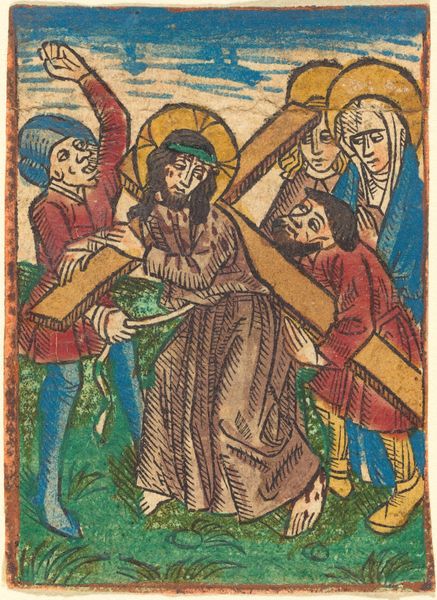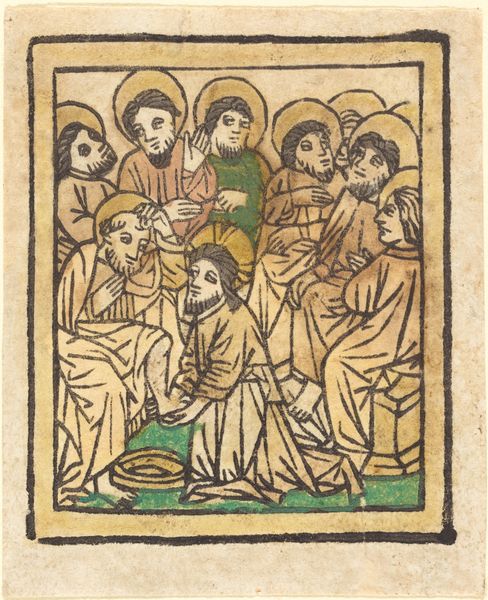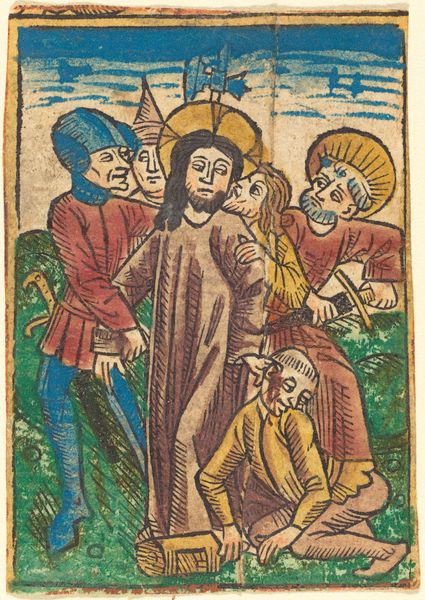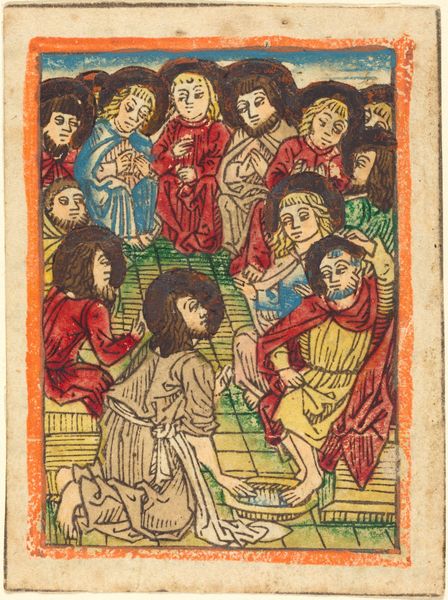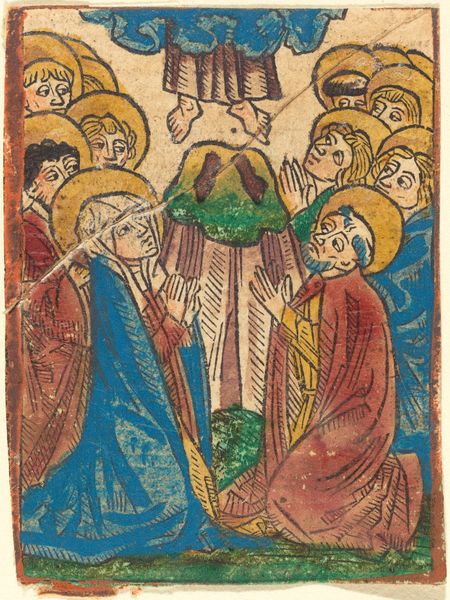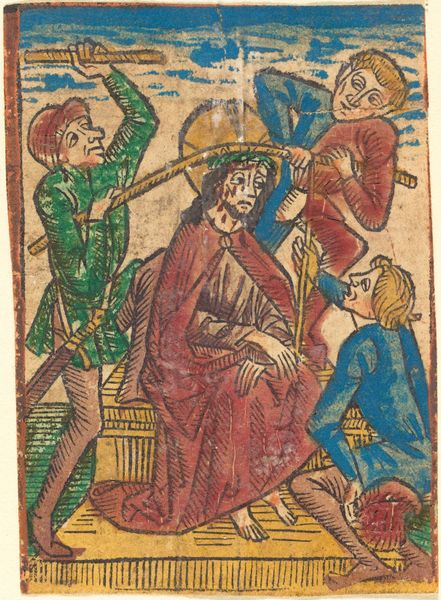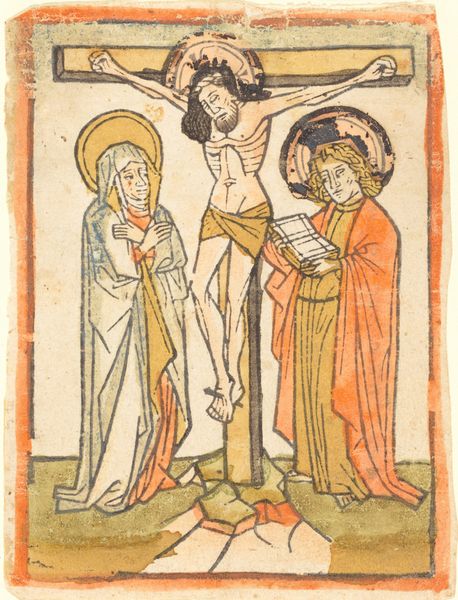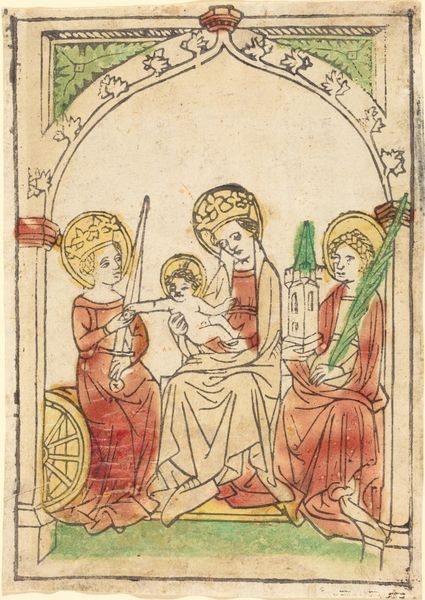
print, ink
#
medieval
#
narrative-art
#
ink painting
# print
#
stain glass
#
figuration
#
ink
#
naive art
#
history-painting
#
watercolor
Copyright: National Gallery of Art: CC0 1.0
Editor: We’re looking at “Christ Washing the Feet of the Apostles,” a print in ink with watercolor from around 1490 to 1500. The colors are striking, but it also feels very formal, even stiff. What do you see in this piece? Curator: It's intriguing how this image, seemingly about humility and service, is framed within such a rigid composition. Notice how the halos create an almost oppressive weight above the figures. I'm drawn to think about the socio-political context in which this was created. This isn't just a religious scene; it’s a potent symbol of power dynamics. Editor: Power dynamics? How so? Curator: Well, consider the act of foot washing itself. Jesus, the leader, performing this task traditionally done by servants. Now think about how that imagery would resonate with the late medieval audience – an audience deeply familiar with hierarchies of power and obligation. Is this image really celebrating humility, or is it subtly reinforcing the divine right of those in power, suggesting they *choose* to serve? Editor: That’s a pretty subversive take. So, the artist might be questioning the status quo? Curator: Perhaps not explicitly, but art often operates on multiple levels. Consider who this print was made for, who consumed it, and how they might have interpreted it within their own social and political realities. Does it challenge existing norms or simply reflect them in a new light? And how does our own contemporary lens change our perception of its message? Editor: Wow, I never considered all those layers. I was so focused on the religious aspect that I missed the social commentary. Curator: Exactly. Art is rarely just about aesthetics. It’s a product of its time, shaped by social forces, and always open to re-interpretation through a contemporary lens.
Comments
No comments
Be the first to comment and join the conversation on the ultimate creative platform.
